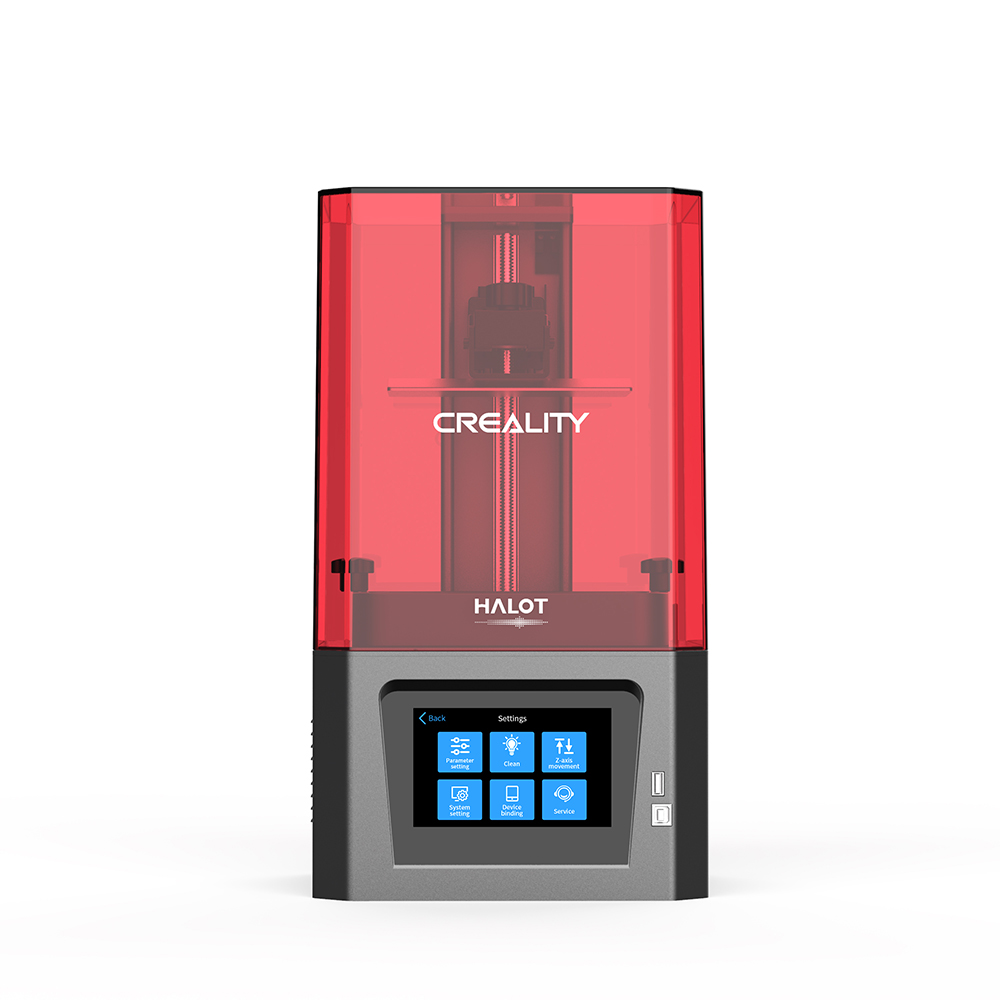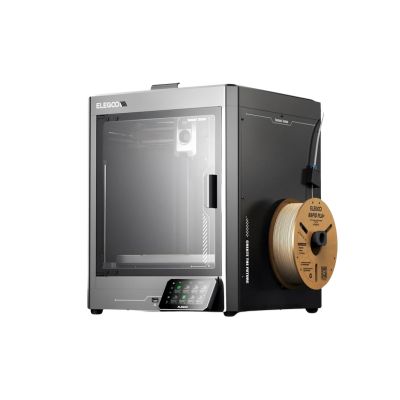Compare Halot One vs Centauri Carbon
Comparison between the best 3D printers
Choose the best 3D printer at the best price. The cheapest 3D printers are here.
Buy a 3D printer here with 3D Fila.
 |
 |
|
| Model | Halot One |
Centauri Carbon |
| Printing Material | Resin | Filament |
| Buy Resin for Creality 3D Halot One | Buy Filament forElegoo Centauri Carbon | |
| Estimated price | $250,00 | $500,00 |
| Manufacturer | Creality 3D | Elegoo |
| Release Year | 2021 | 2025 |
| Print Volume [mm] | 127x80x160 | 256x256x256 |
| Printer Size [mm] | 221x221x404 | 500x500x600 |
| Weight [kg] | 7,1 | 17,5 |
| Power Loss Recovery | NO | YES |
| Maximum Resolution [mm] | 2k | 0,1 |
| Processor | ||
| Display | Touchscreen 4,3'' | |
| Power Supply | 350 W | |
| Connectivity | WiFi, SD, USB | |
| Operating systems | Windows, Mac, Linux | Windows, Linux e Macbook |
| Date of registration in the system | 2022-10-11 | 2025-02-10 |
| Release date | 2021 | 2025 |
| Extra features | Crealitys Halot-One printer stands out with several innovative features. It has a high-resolution touchscreen, providing an intuitive and responsive interface. Its quiet printing capability is remarkable, ideal for environments where noise is a concern. Assembly and setup are simple, with automatic functions facilitating quick start. Among its features, remote monitoring and adjustments via the Creality Cloud app stand out, simplifying remote print management. Replacing the FEP in the resin vat is easy, and the printer even includes extra FEP sheets. Top cover removal detection increases safety by automatically pausing printing. In addition, its integral light source promises high uniformity, optimizing print quality. | The Elegoo Centauri Carbon is a CoreXY 3D printer with an enclosed structure, direct drive extruder, and hardened steel components for abrasive materials. It features automatic bed leveling, a touchscreen, a filament cutting system, and an elongated nozzle designed to reduce clogs. It offers Wi-Fi connectivity for remote file transfer and runs on a Klipper-based firmware, providing advanced control and precise adjustments. |
| Support for multiple colors and materials (AMS and CFS) | NO | NO |
Notes * |
||
| Cost-benefit | 8 / 10 | 8 / 10 |
| Hardware | 0.6 / 10 | 6 / 10 |
| Tela | . | . |
| Print volume | 3 / 10 | 4 / 10 |
| Performance | 9 / 10 | 4 / 10 |
Conclusion |
| In comparing the Creality 3D Halot One and the Elegoo Centauri Carbon, several key factors emerge that may influence your decision based on your specific needs and budget. The Halot One, priced lower, offers a compact print volume and notable features like a high-resolution touchscreen and quiet operation. Its ease of assembly, exceptional remote monitoring via the Creality Cloud app, and automatic safety features contribute to its user-friendly experience. However, it lacks power loss recovery, which could be a drawback during extended print jobs. On the other hand, the Centauri Carbon, despite being more expensive, provides substantial advantages in terms of print volume and technological advancements. Its larger build area allows for more extensive projects, while features such as automatic bed leveling and a direct drive extruder enhance its performance with various materials. The presence of power loss recovery, Wi-Fi connectivity, and Klipper-based firmware further positions it as a robust option for serious users seeking precision and control. In conclusion, if budget constraints are a significant factor and your printing needs are relatively basic, the Halot One presents an excellent entry-level choice. However, for those willing to invest more for a higher print volume and advanced features, the Centauri Carbon may offer a more versatile and professional user experience. Ultimately, the best choice hinges on your specific applications and the degree of sophistication you require from your 3D printer. |

